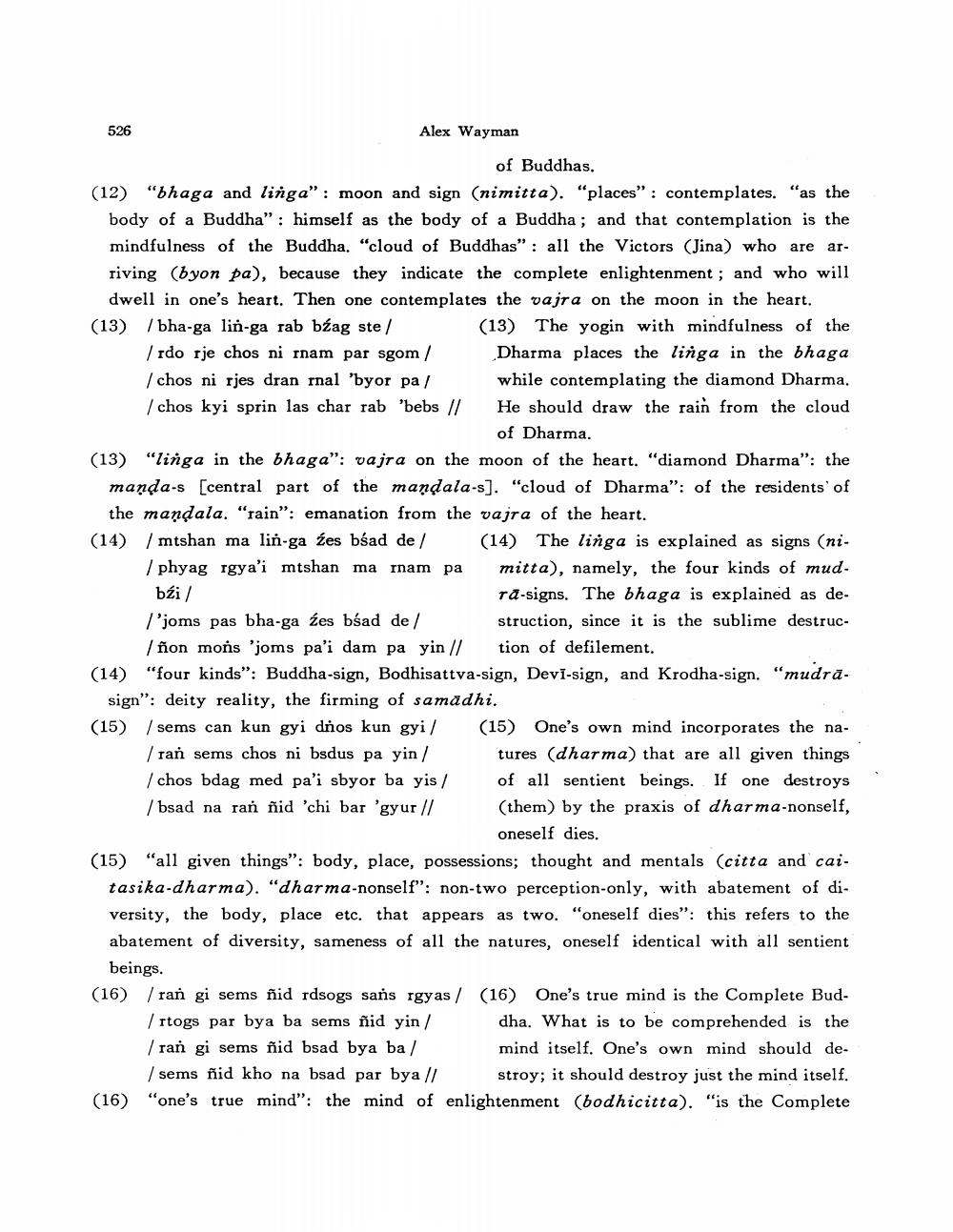________________
526
Alex Wayman
of Buddhas. (12) "bhaga and linga": moon and sign (nimitta). "places" : contemplates. "as the
body of a Buddha": himself as the body of a Buddha ; and that contemplation is the mindfulness of the Buddha. “cloud of Buddhas": all the Victors (Jina) who are arriving (byon pa), because they indicate the complete enlightenment; and who will
dwell in one's heart. Then one contemplates the vajra on the moon in the heart. (13) / bha-ga lin-ga rab bźag sted
(13) The yogin with mindfulness of the / rdo rje chos ni rnam par sgom/ Dharma places the linga in the bhaga chos ni rjes dran rnal 'byor pa / while contemplating the diamond Dharma, chos kyi sprin las char rab 'bebs // He should draw the rain from the cloud
of Dharma. (13) "linga in the bhaga": vajra on the moon of the heart. "diamond Dharma": the manda-s (central part of the mandala-s]. "cloud of Dharma": of the residents' of
the mandala. "rain": emanation from the vajra of the heart. (14) / mtshan ma lin-ga zes bśad de / (14) The linga is explained as signs (ni
/ phyag rgya'i mtshan ma rnam pa mitta), namely, the four kinds of mud. bzi/
ra-signs. The bhaga is explained as del'joms pas bha-ga zes bśad de
struction, since it is the sublime destrucIñon mons 'joms pa'i dam pa yin // tion of defilement. (14) "four kinds": Buddha-sign, Bodhisattva-sign, Devī-sign, and Krodha-sign. "mudra
sign": deity reality, the firming of samadhi. (15) / sems can kun gyi dnos kun gyil (15) One's own mind incorporates the na
/ raň sems chos ni bsdus pa yin/ tures (dharma) that are all given things
chos bdag med pa'i sbyor ba yis / of all sentient beings. If one destroys /bsad na ran ñid 'chi bar 'gyur // (them) by the praxis of dharma-nonself,
oneself dies. (15) "all given things": body, place, possessions; thought and mentals (citta and cai
tasika-dharma). "dharma-nonself”: non-two perception-only, with abatement of diversity, the body, place etc. that appears as two. "oneself dies”: this refers to the abatement of diversity, sameness of all the natures, oneself identical with all sentient
beings. (16) / ran gi sems ñid rdsogs sans rgyas / (16) One's true mind is the Complete Bud
| rtogs par bya ba sems ñid yin/ dha. What is to be comprehended is the
ran gi sems ñid bsad bya ba / mind itself. One's own mind should de
/ sems ñid kho na bsad par bya || stroy; it should destroy just the mind itself. (16) "one's true mind": the mind of enlightenment (bodhicitta). "is the Complete




